Tag archives: education
Indian independence, Doppler effect on a train, contagious science
By Michael Banks
This week India celebrated 70 years of independence. So what better way to mark the occasion than a music video? Step forward 20 or so scientists from the Indian Space Research Organisation (ISRO), who dub themselves the Rocket Band. Over the space of 18 months, they worked feverishly to create a seven-minute music video entitled “I am an Indian”. Mostly shot on the coast of the Arabian Sea, the video features the researchers walking along the beach as well as an animation of the Indian flag being put on the surface on the Moon. “We have a lot of talent in ISRO, making rockets comes naturally to many of us while making music is tough but it is not rocket science,” aerospace engineer Shiju G Thomas told NDTV.
View all posts by this author | View this author's profile
Exploring Bristol’s physics heritage
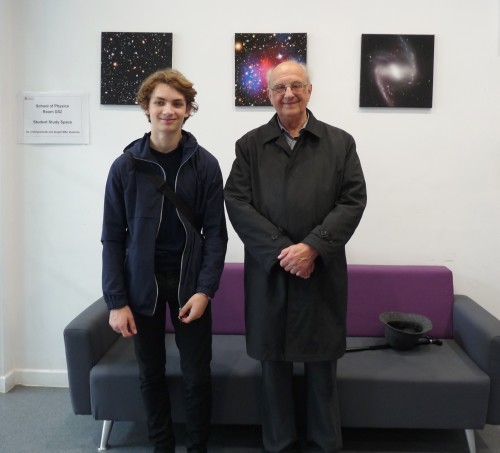
Meeting of minds: Sir John Enderby (right) was Felix James’ perfect physics tour guide. (Courtesy: Felix James)
By Felix James, a student on a work-experience placement with IOP Publishing
If you live in the UK, you are probably aware that at this time of year many school students are asked to do some kind of work experience. Teenagers like me find a placement we are interested in and then go there for a week – rather than school – to get a taste for what work is really like. For me this meant a week at IOP Publishing, which publishes Physics World, but it included an excellent tour of the physics department at the nearby University of Bristol.
View all posts by this author | View this author's profile
Send a birthday card to Fermilab, a huge periodic table, art meets quantum computing
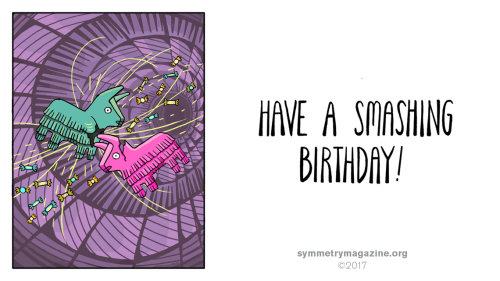
Best wishes: a birthday card for Fermilab (Courtesy: Corinne Mucha/ Symmetry)
By Hamish Johnston and Sarah Tesh
50 years ago this month, the particle physics facility that was to become Fermilab opened its doors for the first time. To celebrate a half a century of physics on the Illinois prairie, the folks at Symmetry have produced a set of themed birthday cards that you can print-out and send to your friends and family. Indeed, there is still time to send a card to Fermilab itself, because the big day isn’t until next Thursday (15th of June). My favourite card (above) uses colliding piñatas to illustrate the plethora of particles that were produced in Fermilab’s Tevatron – which smashed together protons and antiprotons between 1983-2011.
View all posts by this author | View this author's profile
Monuments to peer review and Canada, Marie Curie as superhero, a 3D book about Einstein
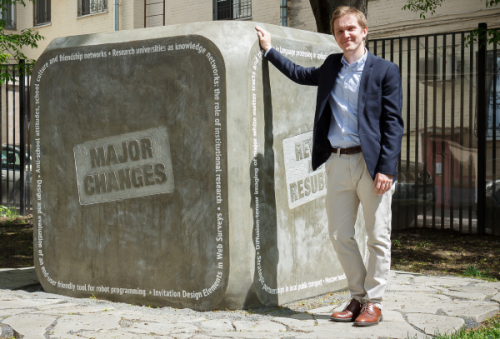
Cubist sculpture: a monument to peer review. (Courtesy: Igor Chirikov)
By Michael Banks and Hamish Johnston
You may remember a campaign to create a monument dedicated to those hard-working people who peer-review research papers. Last year, sociologist Igor Chirikov, from the National Research University Higher School of Economics in Moscow, raised $2521 on Kickstarter to turn an “ugly” block of concrete outside the university’s Institute of Education into a monument that reads “accept”, “minor changes”, “major changes”, “revise and resubmit” and “reject” on its five visible sides. Well, after months of toil that monument has now been unveiled by Chirikov in a ceremony at the institution that was attended by over 100 supporters. “Most understand the sarcastic nature of the monument and love it,” says Chirikov. “Many also wonder what’s on the bottom side of the monument.” Chirikov is thinking of hanging a small mirror on a nearby tree so that everyone can see “Accept” on the top of the cube.
View all posts by this author | View this author's profile
Identifying fingerprints, attractive scientists, what physics students should know
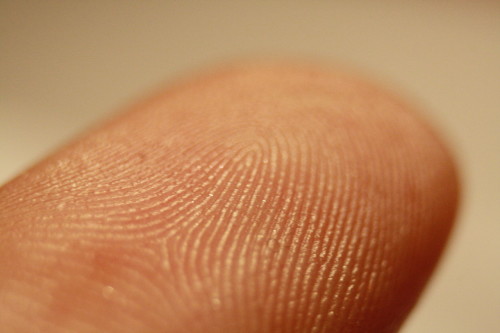
Easily recognized: could you do fingerprint analysis? (CC BY 3.0 / Frettie)
By Hamish Johnston
Do you have the pattern-matching skills needed for identifying fingerprints? If so, researchers at National Institute of Standards and Technology in the US want to hear from you. They have put together a visual quiz that tests your ability to “focus on minute visual details that would leave most people cross-eyed”. You can try the test here.
View all posts by this author | View this author's profile
Einstein, Hawking and Rees set to music, singing about virtual particles, tiny satellite will soon blast off
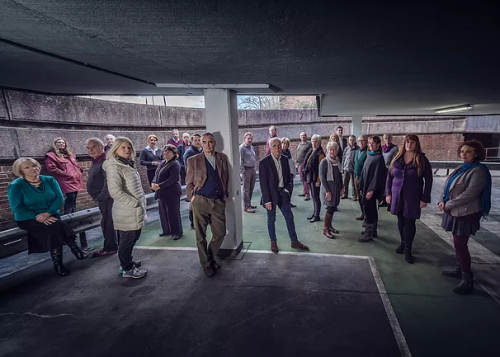
Singing multiverse: the Salisbury Chamber Chorus. (Courtesy: Salisbury Chamber Chorus)
By Hamish Johnston
“What I wanted to write was something about the universe and our place in it: from the Big Bang, through our insignificance in the vastness of it all, our need for exploration and where space travel will take us, to the nature of light or the make-up of electrons, and finally ideas about multiverses and infinity.”
That is the motivation behind the “secular oratorio” Space Time Matter Energy by Simon McEnery, which premieres at St Mary le Strand Church in London on 10 June. The piece melds the words of famous physicists such as Stephen Hawking, Martin Rees and Albert Einstein with music and song from the Salisbury Chamber Chorus, the percussion ensemble Beaten Track and the pianist Peter Toye. If you can’t be in London on the 10th, there is also a performance in Salisbury on 17 June.
View all posts by this author | View this author's profile
Cat-chy quantum song, science TV resurrected, $800,000 textbook, desk traffic lights
By Sarah Tesh
I never realized it until now, but my life was missing a song about Schrödinger’s cat. Well, theoretical physicist, science writer and now singer/song writer Sabine Hossenfelder has come to the rescue with a song about quantum states. This is her second music video done in collaboration artists Apostolos Vasilidis and Timo Alho. The rather cat-chy tune not only includes lyrics about quantum entanglement, Boltzmann brains and the multiverse, but also fits in references to Star Trek and The Matrix. In her BackReaction blog, Hossenfelder says, “If you think this one’s heavy on the nerdism, wait for the next.” We’re looking forward to it!
View all posts by this author | View this author's profile
Discover the secrets of science on TV
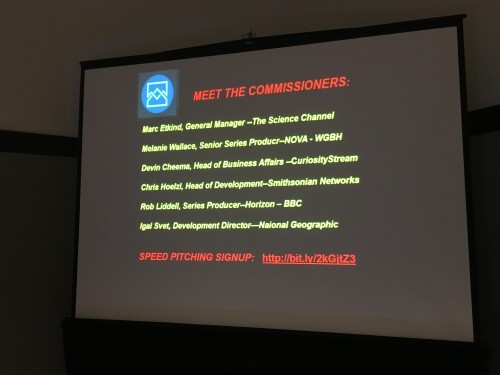
Talent seekers – the panel of top TV producers wanting documentary ideas from delegates at the American Association for the Advancement of Science in Boston.
By Matin Durrani in Boston, US
Physics World has been involved in making online videos and what we call “mini documentaries” for more than seven years. But these are mostly low-budget affairs aimed at people who are, by and large, already interested in physics.
So what if you’re a physicist who wants to work with a big-shot producer to make a full-blown, hour-long TV documentary watched by millions? Shows such as Horizon on the BBC or Through the Wormhole with Morgan Freeman on Discovery’s Science Channel get massive audiences, putting you in touch with far more people than most scientists could ever dream of.
A special session at this year’s annual meeting of the American Association for the Advancement of Science had some of the answers. It brought together a bevvy of top TV producers (see slide above) who shared their tips on how scientists should pitch ideas for documentaries to them. A further session will be held tomorrow to let scientists propose real ideas in a kind of TV-science speed-dating.
View all posts by this author | View this author's profile
Inspiring young physicists, telescope buyer’s guide, time-travelling pyramid builders
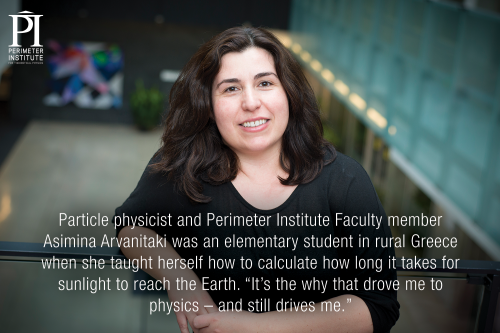
Sunlight calculator: Asimina Arvanitaki. (Courtesy: PI)
By Hamish Johnston
Have you ever wondered what inspires talented physicists to pursue careers in physics? To try to answer that question, the Perimeter Institute for Theoretical Physics (PI) in Canada has produced a set of tiles that explain how some famous physicists – and some up-and-coming stars – became hooked on physics at a young age. An early love of back-of-the-envelope calculations seems to have set the stage for the PI’s Asimina Arvanitaki as she explains in the above tile. Can you guess which Nobel laureate used to stare at a clock pendulum for hours to try to figure out how it worked? The answer to that teaser and much more can be found in “How great scientists get hooked on science”.
View all posts by this author | View this author's profile
Mercury now orbits between Mars and Jupiter, fun with liquid nitrogen, 3D printing an asteroid
By Hamish Johnston
He may have taken the name of a planet, but the late rock star Freddie Mercury now has an asteroid named after him. 17473 Freddiemercury, is about 3.4 km in diameter and resides in the main asteroid belt between Mars and Jupiter. The designation was made by the Minor Planet Center of the International Astronomical Union and announced on Sunday by Mercury’s former Queen band mate and astrophysicist Brian May. In the above video, May gives some background to the naming, which was done to celebrate the 70th anniversary of Mercury’s birth. And if you watch to the end, you will see a clip of 17473 Freddiemercury streaking across the sky with Queen rocking in the background.
View all posts by this author | View this author's profile